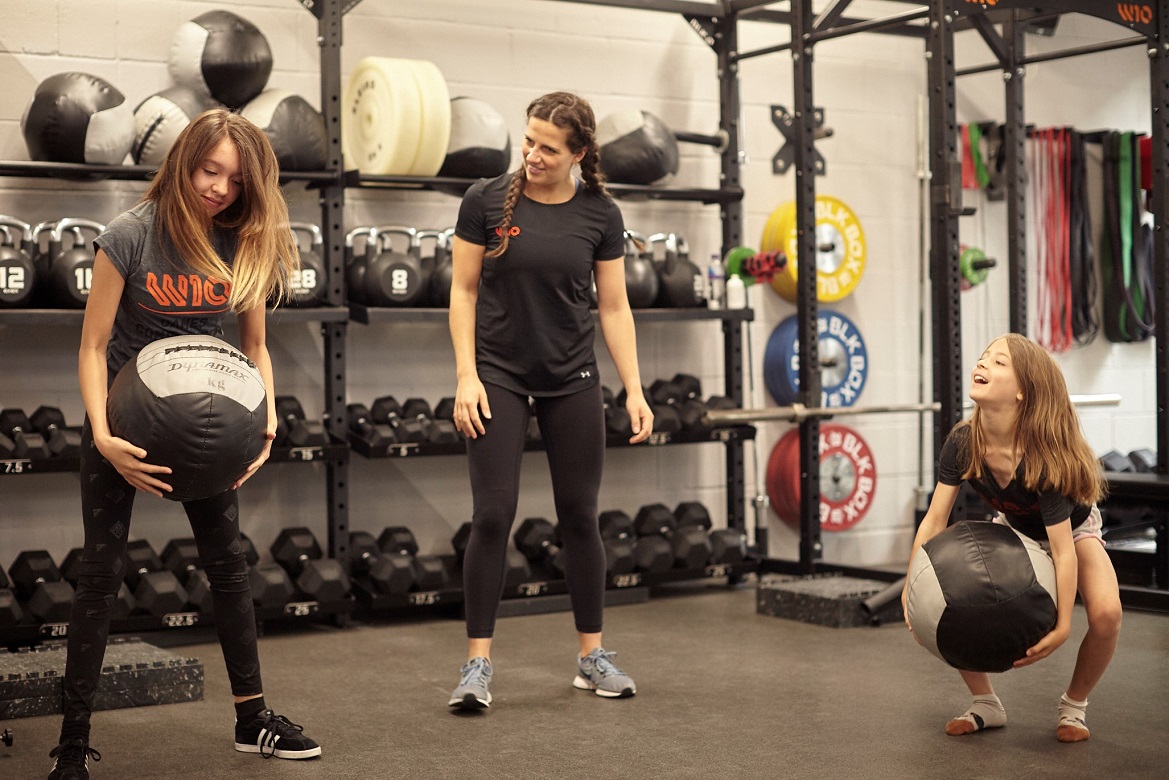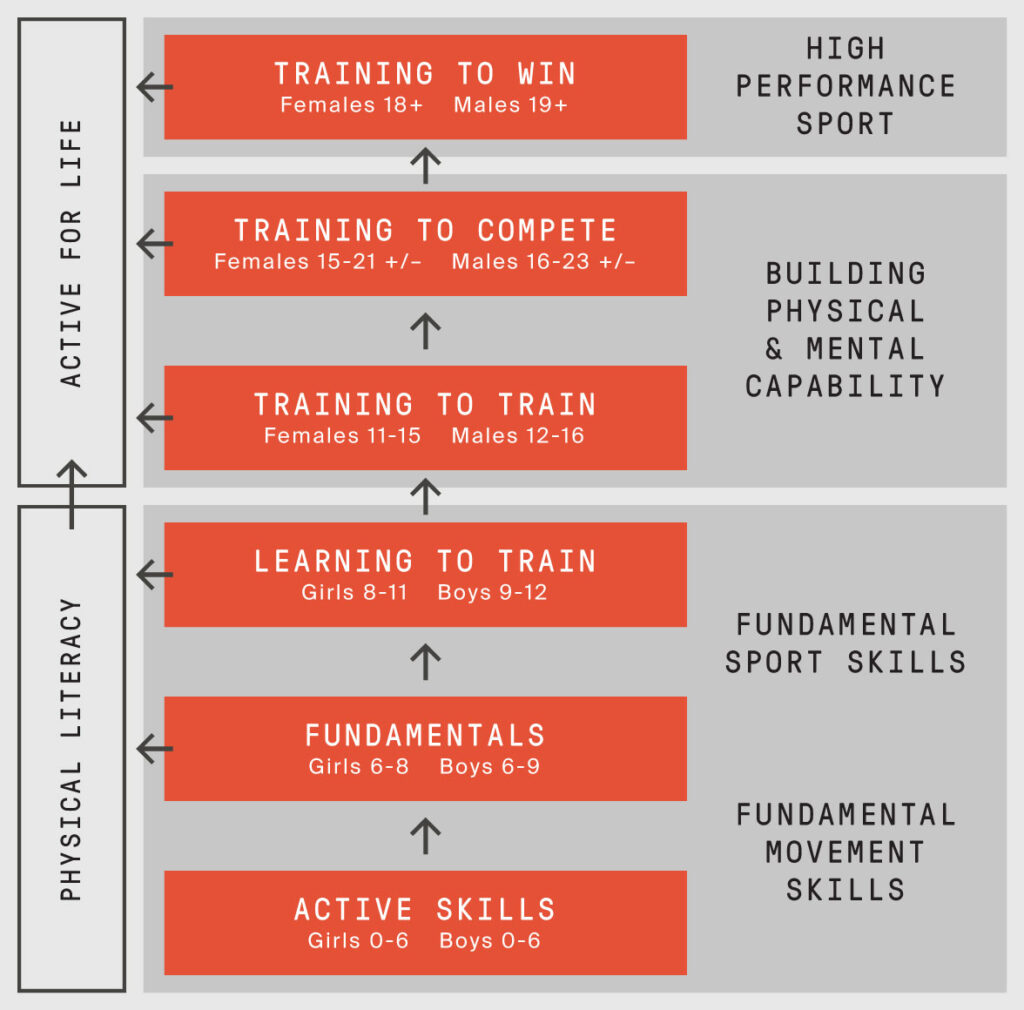
Categories
Strength and Conditioning: Should Kids do it?
“Strength training for kids? Are you mad? that stunts their growth and slow them down!”
I think we have all heard something like this statement before. It forms part of the myriad of exercise myths we have to untangle to find the truth about strength and conditioning for kids.
In fact, this statement is true if you were a pre-pubescent Eastern Bloc female gymnast who was made to train for 8-10 hours a day. The constant high force and velocity training did stunt their growth. However, we cannot take this example and apply it to our own children, especially with what we now know about the benefits of strength and conditioning work in the child population.
You might be looking to prepare your child for their chosen sport. Or just wanting your child to be more active or to remain interested in exercise. If this is the case, it’s vital to discuss the importance of teaching young people the value of the gym.
Learning essential skills that will benefit them and help show them best practice in their training as they grow into young adults.
We also know there is an increase in obesity, in the UK, and strength and conditioning work has been shown to be one of the most effective ways of combating this epidemic.
This blog will explore the benefits and hopefully alleviate any concerns you as parents may have about your child participating in a gym-based programme.
What is strength and conditioning?
Strength and conditioning is a term used in the athletic world to describe all methods of physical preparation for sports. Aims first and foremost are to prevent injury in sports. In actual fact, sports produce a lot more forces and strain on the body than most activities within a gym setting.
The next goal once the basics are learned is to enhance sporting performance. Despite some misconceptions, strength, and conditioning for children and adolescents is not dangerous. It won’t “stunt” their growth (unless your little one is pumping iron for 8-10 hours a day which is unlikely.) It will in fact help them to learn to gain control of their growing and maturing bodies.
What are the benefits of strength and conditioning?
1. Learning technical skills
Research in the field of youth training has shown that participating in a well-structured and supervised resistance programme which focuses on learning movements instead of individual muscles can have a significant effect of improving a developing child or teenagers’ physical literacy and movement competency.
It is also important to note that children should not specialise too early in life. Participating in several sports and exercise activities will decrease the risk of musculoskeletal disorders, which are more often associated with single sport participation and too much repetition of a specific task(s) early in life.
2. The value of physical preparation
It is fundamental for children to have fun in the early stages of exercise. If they enjoy it then they are more likely to continue with it in later life.
A coach should seek to get the desired training stimulus through fun games and get kids practising fundamental movements skills through play. These will include running, jumping, landing, turning, crawling and lunging which should be done in groups or with a partner.
As they progress and master these movements then more advanced techniques may start to be introduced. At this stage, they should be aware of the value of what they are doing and why. We can then start to address individual weaknesses and areas in need of improvement.
3. Improving sports performance
The forces that the body endure commonly in most sports, such as running, jumping and turning sharply are much greater than those produced in early resistance training.
Getting kids stronger, more flexible and improving trunk stability will in fact prepare them for the demands of their sport. Thus, hopefully preventing common non-contact injuries and increasing performance. This should be structured so that the load in terms of volume and intensity are not an interference with what they do outside the gym.
Learning fundamental movement patterns as previously mentioned should be a priority and the use of body weight, bands, light medicine balls and dowels are more than adequate in terms of weight to produce the desired results.
4. Building social skills
As with all group training, youth training should be no different. It is great for meeting new people and making new friends from different backgrounds.
5. Builds confidence and a long-term active lifestyle
It’s also a fantastic way of improving confidence as they improve at given tasks. It can also instil a love for exercise and living an active and healthy lifestyle of which the importance should not be underestimated and will stand them in good stead for adulthood.
The Long Term Athlete Development Model
Below is an example of the Long Term Athlete Development Model from the work of Balyi and Way. This is used by national sports governing bodies the world over. It highlights the different stages of youth training and how it should be progressed.

So, it is clear that strength and conditioning have many benefits for kids and adolescents including “bulletproofing” them against non-contact injuries.
It will also teach them good habits, improve health and sports performance and improve their social intelligence and confidence.
As with most things the earlier you can get them started and interested in exercise the more likely they are to continue as they get older. This will set them up for the future.
Our mission is to help people live their best lives outside of the gym by providing the best possible standards of personal gym training for all ages.
Related Articles
- Strong Is For Everyone
- 10 Fitness Myths and The Truth
- Build your Confidence with Exercise
- Bodyweight Training – You Are Your Own Gym
- The Problem with the UK Fitness Industry


